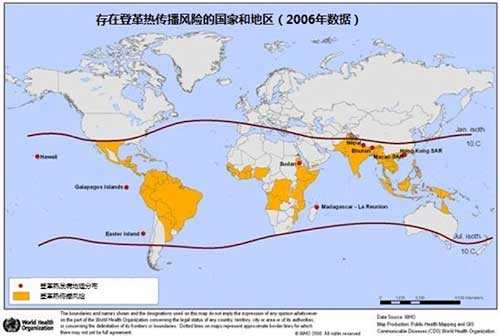
According to a report by the Voice of China, Recently, an acute infectious disease called [dengue fever] is rampant in Guangdong Province. According to the dengue fever epidemic reported by the Guangdong Provincial Health and Family Planning Commission, as of midnight on the 24th, a total of 7,497 cases of dengue fever have been reported in Guangdong Province this year. The cumulative number of cases has increased by 1,263.09% over the same period last year, 10 times that of the same period in previous years, and the severity is unprecedented in 20 years.
So what is dengue fever? Is it terrible? How can we prevent it? After reading this article, you may be able to understand it.
First, is what dengue fever?
Dengue fever is an acute infectious disease caused by dengue virus. The name [dengue] is actually a transliteration of English Dengue. The word Dengue is said to have originated from Kiswahili, which means [sudden cramp is like being possessed by a devil]. Patients with dengue fever will suddenly develop diseases, with persistent fever, severe headache, retroorbital pain, muscle pain, arthralgia and other symptoms, accompanied by anorexia, nausea, vomiting and rash.
Second, how does dengue fever spread?
Unlike many acute infectious diseases, dengue fever cannot be transmitted directly from person to person, but is transmitted by mosquito bites.
The most common mosquitoes found to transmit dengue fever are mainly two kinds. One is Aedes aegypti, The other is Aedes albopictus. The two mosquitoes are similar in appearance, There are white markings on the legs, Aedes aegypti has only been found in some southern provinces such as Guangdong, Taiwan and Hainan in China. However, Aedes albopictus has a wide range of activities and even distributes in Northeast China. At present, according to the analysis of CDC monitoring data in Guangdong Province, it is believed that the outbreak of dengue fever in Guangdong this time is probably caused by Aedes albopictus.
Is dengue fever terrible?
Due to the influence of climate environment on its disseminator mosquitoes, the epidemic scope of dengue fever is mainly in tropical and many subtropical regions, including more than 100 countries and regions in Asia, Africa and Central America. According to the estimation of the World Health Organization (WHO), there are about 50 million cases of dengue virus infection and more than 20,000 deaths each year.

Figure 1. Countries and regions at risk of transmission of dengue fever (2006) [1]
According to WHO reports, the incidence of dengue fever is on the rise worldwide. In 2001, more than 650,000 cases of dengue fever were reported in American countries, of which 15,500 cases had dengue hemorrhagic fever (DHF), a serious complication that can lead to death. The number of reported cases nearly doubled compared with 1995.
Some research literatures believe that global climate change, especially changes in temperature, rainfall and relative humidity, has led to a shortening of mosquito breeding cycle and an increase in mosquito numbers and bites, which may be an important reason for the rising global dengue fever epidemic.

Figure 2. Growth in the annual average of reported dengue fever cases worldwide and in the annual average of reporting countries in the past 60 years [2]
Four, dengue fever has typical symptoms of what?
According to the data provided by CDC in the United States, dengue patients usually have high fever accompanied by at least two of the following symptoms:
1. Severe headache
2. Severe eye pain (especially retroorbital pain)
3. Arthralgia
4. Muscle pain or bone pain
5. Rash
6. Slight bleeding manifestations (such as nose or gum bleeding, or ecchymosis, etc.)
7. Low white blood cell count
Of course, it does not mean that the above symptoms must be dengue fever. Clinical diagnosis of diseases also requires comprehensive judgment based on local epidemic situation, laboratory tests, exposure history and other factors.
Five, how to prevent dengue fever?
At present, there is no vaccine available for dengue fever, so the best way to prevent dengue fever is to cut off the route of transmission, that is, to kill mosquitoes.
Mosquitoes are very productive, Each female mosquito can lay thousands of eggs in its lifetime. The larvae of mosquitoes live alone in the water. It is also very adaptable to the environment, Containers such as Coke bottles, used buckets, used tires, As long as there is water, Wigglers can survive. There are even reports that, Wigglers grow faster in sewage, are easier to survive, and grow bigger. This time Guangdong has a high incidence of people living at home, unemployed or working at home. It is very likely that there are some sanitary dead corners in the home, which enable mosquitoes and wigglers to multiply and inhabit. Therefore, eliminating these sanitary dead corners is the first step to kill mosquitoes.
At the same time, in areas where dengue fever is prevalent, people should also stay away from rivers, lakes and parks where mosquitoes breed. If they have to pass by, they should try to avoid exposing too much skin directly to the outside world. It is best to use screen doors and windows at home to prevent mosquitoes from entering, and mosquito nets should be used as much as possible when sleeping at night.
In addition, people who plan to travel abroad during the National Day, especially those who travel to Southeast Asia, can also learn about the incidence of dengue fever in their destinations through travel agencies or consulting the Entry-Exit Quarantine Bureau and take preventive measures.
